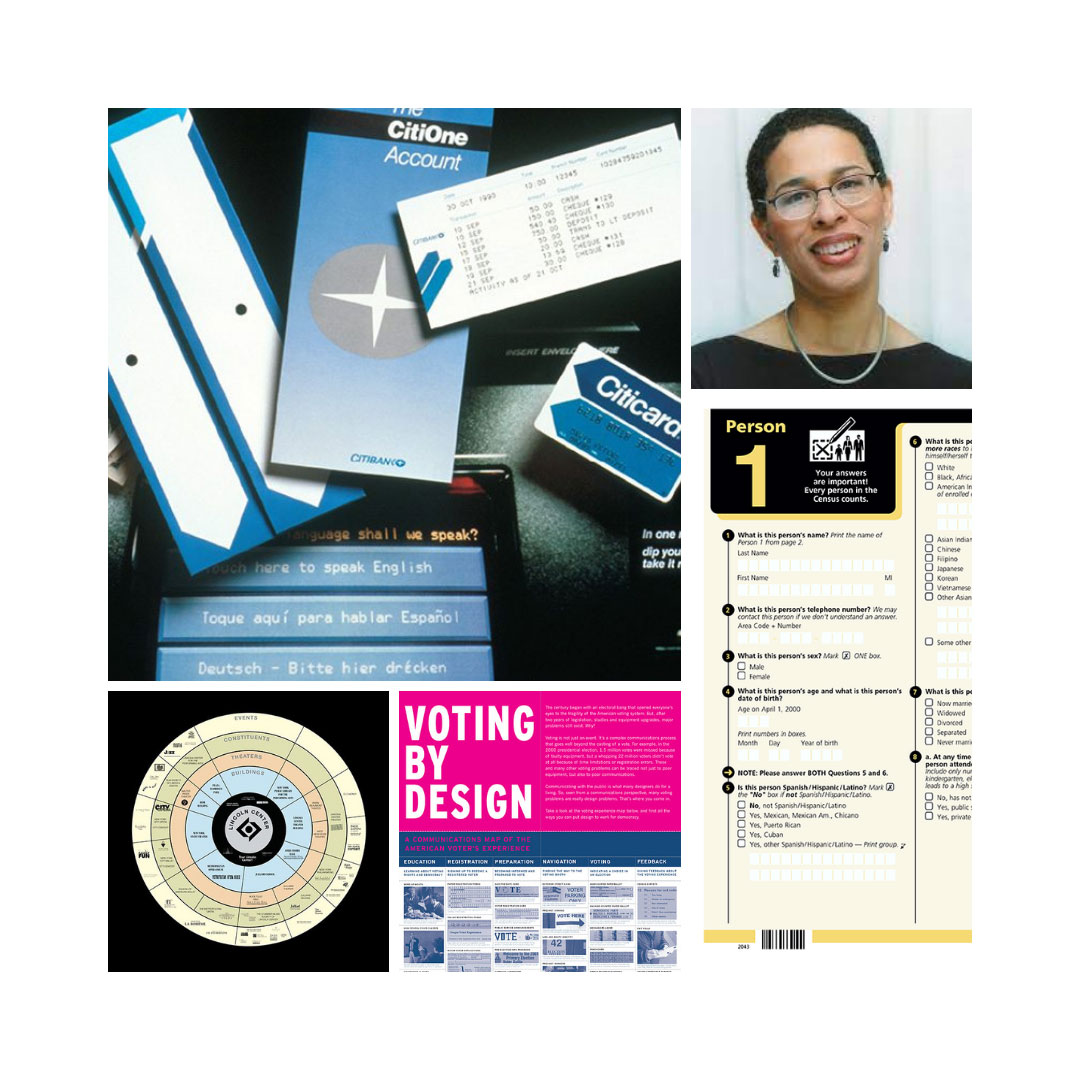3 Black Graphic Designers Who Made (and Are Making) History

written by Lindsey Parker, Project Manager at Dot Think Design
Black History Month is a time to celebrate the contributions and impact that Black Americans have on our culture and society.
And, as the month closes out, we are spotlighting these three designers who have shaped graphic design but have not been given the recognition they deserve and have earned. These designers made and are making a positive (and beautiful) impact on our culture, society, and as a result, the world.
 Thomas Miller
Thomas Miller
For the large part of his career, Miller worked for Morton Goldsholl Associates and was behind some of the most iconic corporate brands in America. He was the chief designer behind the iconic 1970s 7Up rebrand and worked on the team that designed logos for Motorola and the Peace Corps.
Despite the adversity Miller faced, he never gave up on his dream to become a professional graphic designer. After graduating college, he enlisted in the army during WWII and was sent to Europe. While overseas and even in quite difficult conditions, he found ways to express his creativity. The story goes that he made friends with a supply sergeant and was able to obtain some paints and used surplus army cots to paint on. Apparently, he even sold a few landscapes during his tour. When he returned home, he took advantage of the GI Bill to attend Ray-Vogue School of Art in Chicago and graduated with a degree in commercial and graphic art.
In interviews, Miller talked about the racism he faced. It wasn’t the violent racism of the Ku Klux Klan; it was the polite racism of corporate America. He was told he was talented but too dark. And one potential employer offered to hire him but only if he sat behind a screen so no clients would see him. In interviews, Miller spoke about his appreciation for Millie and Morton Goldsholl, who hired him as one of their first graphic designers when they opened their design firm. The Jewish American Goldsholls sought to create a workplace where white Americans, African Americans, Japanese Americans, men and women worked together as equals.
After Miller retired from Goldsholl’s, he stayed committed to the Civil Rights Movement and was commissioned to design the murals for the DuSable Museum of African American History. He made Harold Washington, Chicago’s first Black mayor, a central figure.
“Miller built his mosaics out of translucent plastic squares made from egg crate light diffusers, the mesh squares that filter light from overhead fluorescent bulbs common in late-twentieth-century workplaces. Harkening back to his army days, Miller sourced the material from offices around the city and broke them down with the help of his children. He hand-painted each tile—thousands of them—and assembled them into a pre-planned grid. At once homespun and carefully executed, Miller’s mosaics refracted the ‘light of his 7Up campaign to envision a reconstructed Chicago. Each tile had to be placed at a precise angle, he explained, ‘to catch the light.’” – AIGA.org
 Gail Anderson
Gail Anderson
Trailblazer Gail Anderson is an NYC-based designer and educator. Anderson has received awards from the Society of Publication Designers, the Type Directors Club, AIGA, the Art Directors Club, Graphis, Communication Arts, and Print, and her work is in permanent residence at the Library of Congress. She has co-authored several books on design, is a teacher at the MFA Design program at the School of Visual Arts, and has lectured at colleges and design organizations throughout the country. She also serves on the advisory board for the Adobe Design Achievement Awards. Anderson designed the 2013 Emancipation Proclamation US postage stamp. She is the first woman of color to be honored with the American National Design Awards’ Lifetime Achievement from the Smithsonian Design Museum in 2018, and only the third woman.
Gail has commented on the disappointing lack of diversity in design.
“I wish we didn’t have to talk about this stuff in 2019; to have to make an effort to be diverse, but that’s still the reality of our business. There are resources out there and consultants to help if you’re willing to acknowledge the need for an office or studio that reflects a variety of voices and experiences. I hope that in a decade, employers won’t need outside help, but we’re just not there yet.”
You can learn more about her and see her work here.
 Sylvia Harris
Sylvia Harris
Sylvia Harris is referred to as the Citizen’s Designer. Growing up in Virginia during the civil rights movement gave her a unique understanding of people and how they are affected by social systems. In the 1970’s she worked at The Architects Collaborative, where she was introduced to environmental graphic design for the first time. This job set the tone for her later achievements.
After leaving The Architects Collaborative she earned her graduate degree, and in 1980 she co-founded a design consulting firm, Two Twelve Associates, focused not on selling things but instead creating access to the tools and places of public life. This led to her seminal work for Citibank, where she designed the first ATM interface, which set the early standard for automated customer service.
After leaving Two Twelve she founded Sylvia Harris LLC, where she shifted her focus to design planning and strategy. Her work at Sylvia Harris LLC guided some of the nation’s largest hospitals, universities, and civic agencies through systems planning, policy development, and innovation management.
Sylvia is the brains behind the design of the 2000 Census for the United States Census Bureau. Her life experience influenced her user-centered form redesign with the goal of encouraging under-represented citizens to participate.
She believed, “Just as architects and planners should remember that they are creating places for real people, we communications designers are creating useful tools for those same real people, and we must never forget that.”






